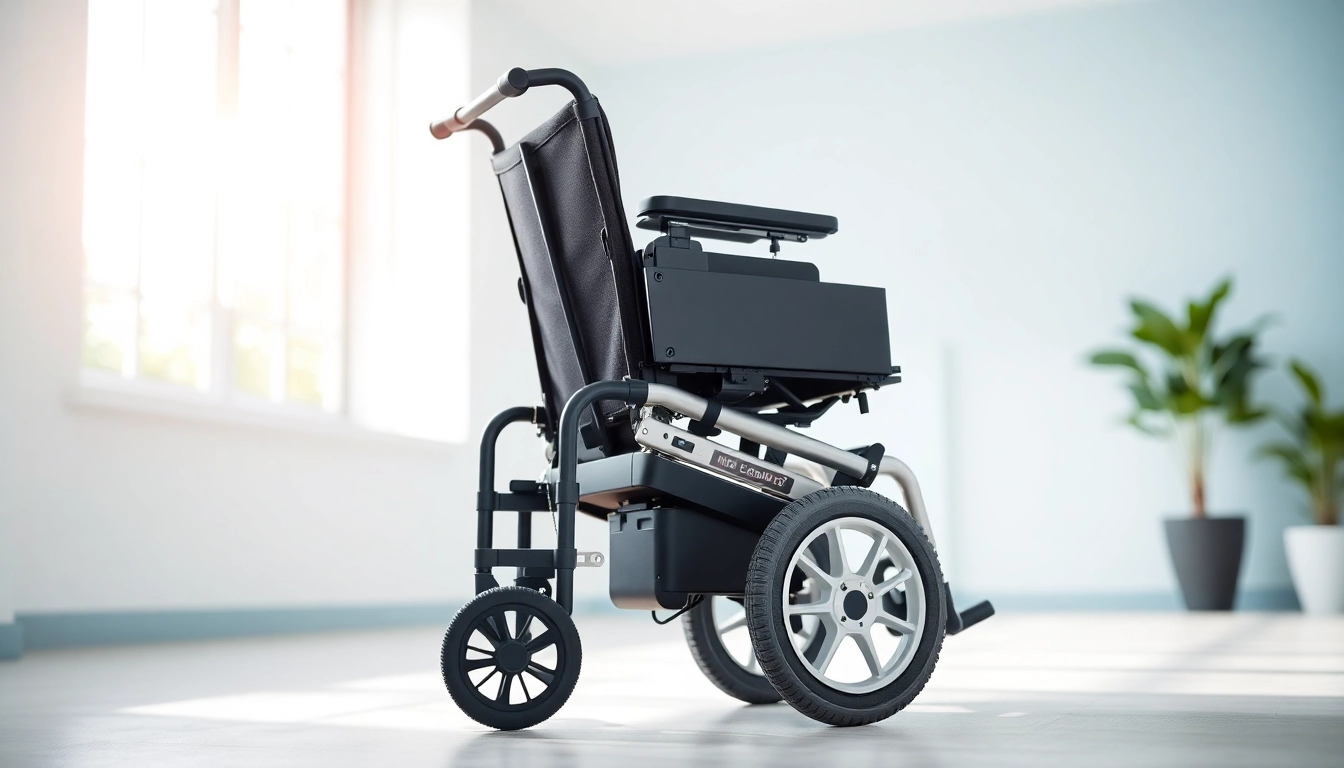Understanding Electric Wheelchair Technology
The advancement of mobility aids has revolutionized the lives of many individuals with mobility challenges. Among these aids, the Electric Wheelchair stands out due to its innovative features, enhanced comfort, and increased independence. Studying the technology behind electric wheelchairs can provide empowering insights for potential users.
Components of an Electric Wheelchair
Electric wheelchairs are intricate machines, composed of several key components that work together to provide mobility. Understanding these parts will help users and caregivers make informed decisions.
- Frame: The structure of an electric wheelchair is typically made from durable materials like aluminum or steel, which provides stability without excessive weight.
- Motor: Electric wheelchairs are powered by one or more electric motors that drive the wheels. Motors vary in strength, allowing for different speed levels and hill-climbing abilities.
- Batteries: The battery is crucial for powering the wheelchair. Lithium-ion and lead-acid batteries are common, with lithium-ion options being lighter and more efficient.
- Control System: Users operate the wheelchair using a joystick or a control panel, which sends signals to the motors and adjusts speed and direction.
- Safety Features: Many models come equipped with brakes, seat belts, and anti-tip mechanisms, ensuring user safety while navigating different environments.
Types of Electric Wheelchairs
Electric wheelchairs come in various designs to meet diverse mobility needs. Understanding the types available can help consumers choose the right model.
- Power Wheelchairs: These are designed for individuals who require a wheelchair for regular use and offer superior comfort and support.
- Portable/Travel Wheelchairs: Lightweight and compact, these wheelchairs are ideal for individuals who need a mobility aid that is easy to transport.
- Heavy-Duty Wheelchairs: Specifically engineered for users with higher weight capacities, ensuring durability and reliability.
- All-Terrain Wheelchairs: Equipped with strong tires and suspension systems, these are perfect for outdoor use.
How Electric Wheelchairs Work
Understanding the mechanics of how electric wheelchairs operate can demystify the technology. When the user moves the joystick or control panel, it sends signals to the electric motors, indicating the desired direction and speed. Sensors help monitor wheel traction and adjust power distribution accordingly. This seamless integration of technology allows for smooth and efficient maneuverability, accommodating various terrains from indoor floors to outdoor paths.
Key Benefits of Using an Electric Wheelchair
Investing in an electric wheelchair can markedly improve the quality of life for users. Benefits extend beyond mere mobility, enhancing overall independence and comfort.
Increased Mobility and Independence
For many individuals, mobility challenges can diminish independence. An electric wheelchair empowers users by allowing them to navigate their environments with ease, whether it’s moving around the home or exploring outdoor spaces. Increased mobility leads to improved participation in social and recreational activities, fostering a greater sense of community and belonging.
Comfort and Ergonomics
Electric wheelchairs are designed with user comfort in mind. Ergonomic features, such as adjustable seating, cushioned armrests, and customizable controls, not only enhance the comfort level but also prevent strain and injuries associated with prolonged usage. Many models also offer reclining or elevating options, catering to individual comfort preferences.
Cost-Effectiveness in the Long Run
While the initial investment in an electric wheelchair may seem significant, the long-term benefits can outweigh the costs. Electric wheelchairs tend to reduce the need for assistance, thus lowering potential caregiving costs. Moreover, advancements in battery efficiency reduce energy expenses, making electric wheelchairs an economically viable option for many users.
Choosing the Right Electric Wheelchair for Your Needs
Once the decision to purchase an electric wheelchair is made, selecting the right model is paramount. A well-chosen wheelchair can dramatically enhance a user’s mobility experience.
Assessing Your Specific Requirements
Understanding your unique mobility needs is the first step in the selection process. Factors such as weight capacity, typical usage environments, and personal medical conditions should inform your decision. Consulting with medical professionals or occupational therapists can provide valuable insights into your needs.
Features to Consider When Buying
When evaluating different models, potential buyers should focus on essential features, including battery life, speed settings, weight, portability, and safety features. Also, assess the wheelchair’s adaptability to different terrains and spaces. Testing various models can help in determining which features enhance comfort and usability.
Comparing Models and Brands
Conducting thorough research on various models and their manufacturers is crucial. Reading user reviews, watching video comparisons, and seeking recommendations can provide a comprehensive view of performance, customer service, and reliability. Look for trusted manufacturers with a strong reputation in the market to ensure quality support and warranty options.
Maintaining Your Electric Wheelchair
Proper maintenance of an electric wheelchair is crucial for ensuring its longevity and reliability. Adopting routine care practices can mitigate costly repairs and enhance performance.
Routine Maintenance Tips
Routine maintenance checks are essential for preventing mechanical issues. Users should regularly inspect the wheelchair for wear and tear, ensuring that components such as tires, brakes, and batteries are functioning correctly. Following the manufacturer’s guidelines for maintenance schedules can significantly increase the lifespan of the wheelchair.
Common Repairs and Troubleshooting
While electric wheelchairs are reliable, they can encounter issues over time. Common problems include battery failures, tire punctures, and malfunctions in the joystick control. Understanding basic troubleshooting steps can help users address minor issues independently and determine when it’s time to contact a professional.
Ensuring Longevity Through Proper Care
Beyond regular maintenance, ensuring the proper usage of the wheelchair is imperative. Avoiding excessive weight loads and using the wheelchair on appropriate terrains can prevent damage. Additionally, storing the wheelchair in a dry, cool environment can prolong battery life and maintain structural integrity.
Future of Electric Wheelchair Technology
The electric wheelchair industry is continually evolving, with innovations promising to enhance user experience further. Understanding these trends can help potential users anticipate the next generation of mobility aids.
Innovative Features on the Horizon
Future electric wheelchairs are poised to include innovations such as advanced sensors that provide real-time feedback for optimal navigation and safety. Features like automatic obstacle detection and adaptive speed control based on the user’s surroundings are often being developed to provide a smoother experience.
Integrating Smart Technology
As smart technology progresses, its integration into electric wheelchairs becomes more feasible. Innovations like mobile app connections, GPS tracking, and remote diagnostics can enhance usability, allowing users to monitor usage patterns, battery life, and even locate their wheelchairs if misplaced.
Environmental Considerations and Trends
With rising environmental concerns, manufacturers are focusing on sustainable practices. This includes using recyclable materials in production and optimizing batteries for lower energy consumption. The drive toward eco-friendly solutions will likely influence electric wheelchair design and functionality.



